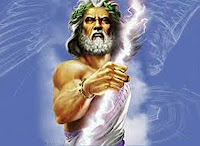The desire to decorate our walls dates back to the caveman days when our ancient ancestors marked their cave walls with dots, lines, zigzags, and cross-hatching. Fast forward tens of thousands of years and we have modern day wallpaper providing that decoration.
Some of the earliest known examples of wallpaper are thought to date back more than 2,000 years to China's Qin dynasty. Images of landscapes, flowers, and birds were painted on rice paper. By the 12th century, this craft was believed to have traveled to the West via the Silk Road. By the end of the 18th century, mechanization created a change in the industry.
So, you ask, what is it about wallpaper that could possibly be considered dangerous? The mystery is in the way it was being made at that time. There are hundreds of samples of wallpaper from that era located in The National Archives in London that were scientifically proven to contain arsenic, an innocuous looking white powder known even at that time to be poisonous. The arsenic also produced vibrant color that, after centuries, has shown very little color deterioration. People working with the wallpaper samples in The National Archives put on gloves before handling the poisonous paper.
For paint and dye manufacturers, arsenic was a cheap product that increased the brilliance and durability of pigments, especially when applied to wallpaper. The public loved the bright colors of the wallpaper. Even when they learned that the dyes contained arsenic, they still did not consider it dangerous (assuming no one licked the wallpaper or their fingers after touching it). What the public didn't realize was that damp conditions caused the arsenic to release a lethal gas. In spite of mounting evidence and increasing public awareness, wallpaper manufacturers were not eager to ban arsenic.
One of the most interesting associations of arsenic laced wallpaper and a death is the case of Napolean Bonaparte.
Napoleon was only 51 when he died on the island of St. Helena, where he had been exiled from France and held captive by the British. There was instant speculation that the British had somehow murdered him. By May 5, 1821, he had been getting sicker for several months, suffering from recurrent abdominal pain, progressive weakness and severe constipation. His last weeks were plagued by vomiting, incessant hiccups, and blood clots in various parts of his body.
The physicians who conducted Napoleon’s autopsy, on May 6, 1821, concluded that his death was from stomach cancer, exacerbated by bleeding gastric ulcers, after a huge dose of calomel was administered to him on the day before he died. Calomel was a compound that contained mercury and was used as a medicine at that time before the dangers of mercury were known.
140 years later, in 1961, an article published in Nature Magazine made international headlines about analyzing a lock of Napoleon's hair which showed that Napoleon may have died from arsenic poisoning. It was proven that the wallpaper in Napoleon's living quarters at St. Helena did have arsenic laced wallpaper. This was greeted by acceptance with the public pleased that the real cause of death had finally been discovered. It was decades later when a rebuttal to the arsenic poisoning claim was presented. The rebuttal did say that in the bad old days of medicine the presence of arsenic was common and specifically mentioned wallpaper
Napoleon's family medical history of gastric carcinomas, and the advanced state of his stomach cancer and bleeding stress ulcers, suggest the initial autopsy results seem to be the most likely cause of death. But that does not negate the reality of arsenic laced wallpaper.



































